How Detroit Invented Traffic Cops, Traffic Lights, No Parking Zones & Towing Your Car

Due to advancements such as air bags, driving is much safer than it was when I first got my driver’s license in the early 1970s. Even then, because of seat belts and crush zones, cars were much safer than they had been in the early automotive age. The first decades of the automobile resulted in chaotic and unsafe driving conditions. Not only were the vehicles themselves dangerous to passengers and pedestrians (three quarters of early motoring related fatalities were pedestrians, often children), in the early days it was a free for all, with the first proposed traffic laws being instituted only after about a decade after the first automobiles. Author Bill Loomis is working on a book on Detroit history and in an extensive article in the Detroit News he discusses just how unsafe driving was a century ago, as well as the role that the Motor City had in making driving safer and less chaotic. Some of those innovations continue to make drivers safe, while others continue to annoy us.
Things we take for granted had to be implemented in the first place; even things as mundane as lane markings. The first centerline on a U.S. road was painted in Michigan in 1911. Before that, people would drive wherever they cared. Cars started to clog cities that weren’t designed with parking in mind, so people would park wherever they wanted to as well, sometimes in the middle of intersections or in front of fire hydrants. The city of Detroit started to use equipment designed to mark lines on tennis courts to paint lane dividers, crossings, safety zones and no parking zones, issuing citations to violators.
The Ferndale crow’s nest when it was operational. Note the warning to pedestrians to “walk right”. Pedestrians made up about 75% of early traffic fatalities.
Traffic control devices, called Street Semaphores, were first implemented in Detroit. Developed by Cleveland inventor Garrett Morgan (who also invented the gas mask), they were manually operated red and green signs, later fitted with with red and green lights, controlled by a traffic patrolman in a crow’s next above the street. In the 1920s, the Street Semaphores were replaced with automatically operating stop lights, with the first automated traffic light being installed at the intersection of John R. St. and East Grand Blvd. in 1922. Around that time, a yellow light was added to the mix to alert drivers of an impending red light. (By the way, the motivation for switching to traffic lights wasn’t so much safety as saving money. The automated lights cost 10% of what it cost to man a Street Semaphore crow’s nest.)
A different view of the same crow’s nest. Note the street car lines on Woodward Ave.
To commemorate the Street Semaphores, Ferndale, Michigan installed a sculpture of one of the traffic crow’s nests near where one had been installed in 1920 at the intersection of Woodward Ave and Nine Mile Road. When Woodward was widened in 1928, that crow’s nest was replaced with an automated traffic light, but it was fondly remembered in Ferndale. Artist Shan Sutherland, who received his MFA in metalsmithing from the Detroit area Cranbrook Academy of Art, based his reproduction on historic photographs. The traffic signal is “manned” by a bust of a Ferndale police officer sculpted by Anne Sutherland, the artist’s mother.
A traffic control crow’s nest on Detroit’s West Grand Blvd, with the General Motors Building in the background. By the 1920s, automated electric traffic lights had replaced semaphores, but traffic cops, another Detroit innovation, were still needed.
Traffic lights weren’t the only traffic control device invented in Detroit. In 1911, the city was the first to implement one-way streets as a way of improving traffic flow and making commercial deliveries easier. The first stop sign in the United States was installed in Detroit a century ago in 1915. It had black letters against a white background. In the 1920s, the familiar octagon shape was standardized by national committees (though for decades stop signs were yellow, not changing to red until the 1950s).
Today, some states and cities have traffic lanes restricted to high occupancy vehicles or hybrid cars. That concept was presaged in the Motor City with an idea called “channelizing” streets, allowing only particular kinds of vehicles, like delivery vans or taxi cabs, on particular streets.
Detroit was the first city to have specific traffic cops, with a quarter of 1914’s thousand member Detroit Police Dept being assigned to traffic duty, and it was the second municipality, after New York City, to establish traffic courts.
Even with traffic cops and traffic courts, illegal parking continued to plague Detroit. James Couzens had been the business manager of the Ford Motor Company from its founding until he got sick and tired of working for Henry Ford in 1913. For a $10,000 investment in FoMoCo, Couzens was eventually paid $38 million. After he retired from Ford, he went into politics, first becoming Detroit mayor and then a U.S. senator. As mayor in 1917, Couzens proposed dealing with illegal parking with what he called “intensive disciplinary training”. Within half a year, the newly organized Detroit Towing Squad had towed almost 11,000 cars to a city owned vacant lot. Couzens, a pretty smart guy later said, “This proved to be something of a shock to the thoughtless and careless, but it proved effective.”
Ronnie Schreiber edits Cars In Depth, a realistic perspective on cars & car culture and the original 3D car site. If you found this post worthwhile, you can get a parallax view at Cars In Depth. If the 3D thing freaks you out, don’t worry, all the photo and video players in use at the site have mono options. Thanks for reading – RJS

Ronnie Schreiber edits Cars In Depth, the original 3D car site.
More by Ronnie Schreiber
Latest Car Reviews
Read moreLatest Product Reviews
Read moreRecent Comments
- SCE to AUX All that lift makes for an easy rollover of your $70k truck.
- SCE to AUX My son cross-shopped the RAV4 and Model Y, then bought the Y. To their surprise, they hated the RAV4.
- SCE to AUX I'm already driving the cheap EV (19 Ioniq EV).$30k MSRP in late 2018, $23k after subsidy at lease (no tax hassle)$549/year insurance$40 in electricity to drive 1000 miles/month66k miles, no range lossAffordable 16" tiresVirtually no maintenance expensesHyundai (for example) has dramatically cut prices on their EVs, so you can get a 361-mile Ioniq 6 in the high 30s right now.But ask me if I'd go to the Subaru brand if one was affordable, and the answer is no.
- David Murilee Martin, These Toyota Vans were absolute garbage. As the labor even basic service cost 400% as much as servicing a VW Vanagon or American minivan. A skilled Toyota tech would take about 2.5 hours just to change the air cleaner. Also they also broke often, as they overheated and warped the engine and boiled the automatic transmission...
- Marcr My wife and I mostly work from home (or use public transit), the kid is grown, and we no longer do road trips of more than 150 miles or so. Our one car mostly gets used for local errands and the occasional airport pickup. The first non-Tesla, non-Mini, non-Fiat, non-Kia/Hyundai, non-GM (I do have my biases) small fun-to-drive hatchback EV with 200+ mile range, instrument display behind the wheel where it belongs and actual knobs for oft-used functions for under $35K will get our money. What we really want is a proper 21st century equivalent of the original Honda Civic. The Volvo EX30 is close and may end up being the compromise choice.


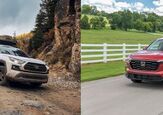

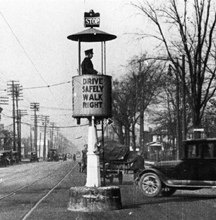




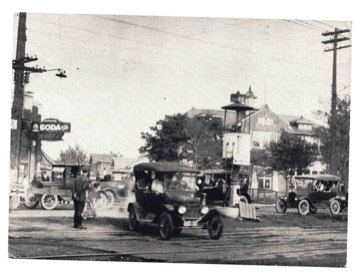






















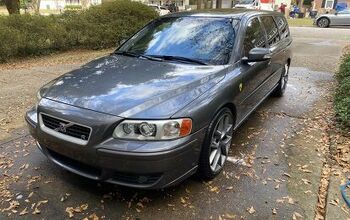
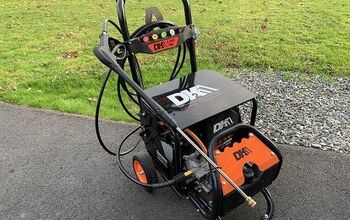
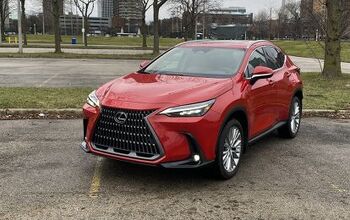


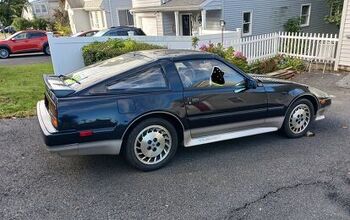

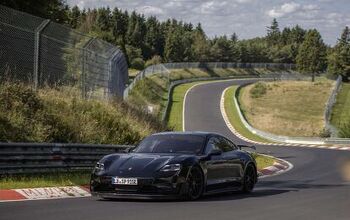
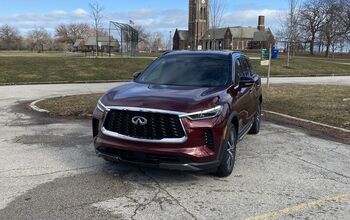


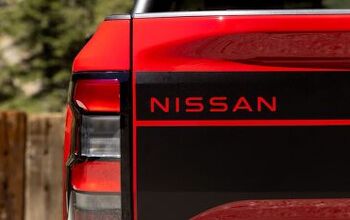



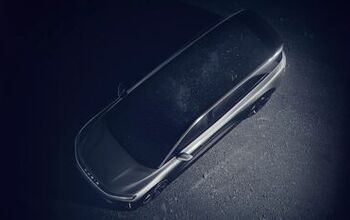
Comments
Join the conversation
Detroit must have been woefully behind the times back then. On the 9th December 1868 the first gas powered traffic lights were installed outside the British houses of parliament .And I think from memory this was the first installation of traffic lights in London. It exploded the next year ,killing the unfortunate policeman who operated the signal. Because railways were using coloured signals long before the invention of the motorcar, it was only logical that the same system of colours be employed for car use.I have seen a movie of San Francisco taken before the big earthquake. Cars can be seen driving on both sides of a broad avenue,in either direction with folks simply wandering across the road where they felt like it. I can imagine the free for all on roads in those early days...I was in Russia at the fall of the soviet union and all of a sudden,Germany et al found a new market for their second hand cars... a glimpse at some of those car crash vids on you tube tells me that it hasn't changed much there.The cars are newer is all.
Over the past few years I've been doing research into the evolution of highways and one reference (Earl Swift's "The Big Roads", I think) indicated that red stop signs had to wait until the 1950s because red paints tended to fade rather quickly when exposed to the elements. It took until the '50s to develop more durable pigments. As to lane markings, while city streets were often (though not always) paved by the 1920s, rural roads often were not. As late as the mid-1930s Wisconsin road maps indicate that in the northern half of the state even U.S. highways tended to be paved with materials other than asphalt or concrete. Painting stripes on gravel or dirt roads would, of course, have been impossible. Furthermore, many rural roads hadn't yet been upgraded to newer standards and were as little as 9 feet wide making lane designations meaningless. Also, those dirt roads would become rutted quite easily so motorists would tend to drive on which ever side of the road was most passable. Left-hand drive wasn't standardized in the U.S. until automobiles had been around for several years and some manufacturers built left-hand cars, some right-hand. At least one—J.I. Case—offered both, depending on the model you chose. Given the chaos that must have ensued it's remarkable that we survived.